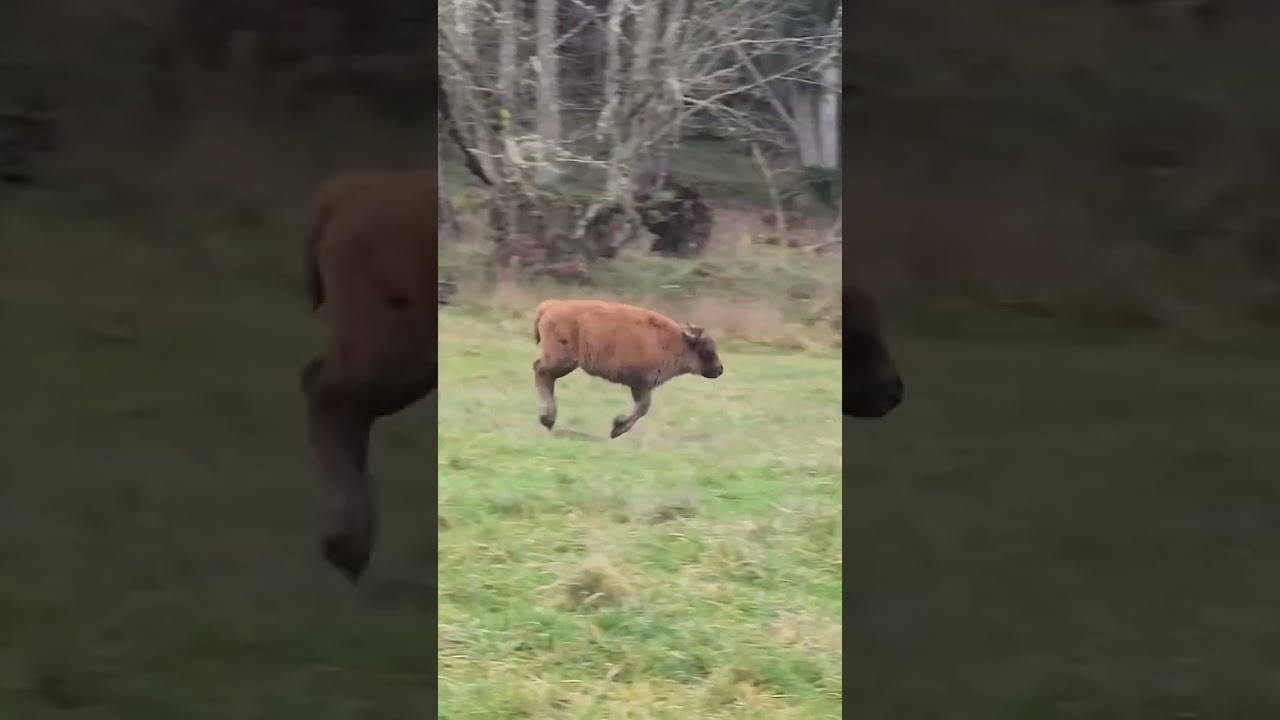- Understanding Bison Calf Zoomies: Behavior and Significance
- The Biology and Growth of Bison Calves
- The Role of Zoomies in Bison Social Structure and Development
- Implications for Zoo Management and Wildlife Conservation
- Enhancing Public Awareness and Research Opportunities
Bison calf zoomies offer a fascinating glimpse into the early life stages of one of North America’s most iconic species. These seemingly playful bursts of energy, observed in young bison, are not just a spectacle of youthful exuberance. They provide critical insights into the behavior, physical development, and social dynamics of bison populations. This article seeks to explore these behaviors, tracing their underlying biological mechanisms and assessing their significance in terms of conservation and educational objectives.
Understanding Bison Calf Zoomies begins with a careful observation of their behavior. Zoomies are characterized by sudden, energetic running and jumping, often interspersed with playful bucking and circling. While they may appear random and purely recreational, these activities are essential to the physical and social development of the calves. From a physiological standpoint, zoomies contribute to muscle development, coordination, and overall physical health in bison calves. They help enhance cardiovascular function, preparing the young animals for the demanding life in the wild.
Biologically, bison calves resemble other ungulates in their early stages. Born with relatively developed senses and the ability to stand within a few hours, they quickly become active members of their groups, known as herds. The biology and growth of bison calves are closely linked to their behavior. In the wild, these calves face various threats from predators and environmental challenges. Therefore, building strength and speed through activities like zoomies provides them with survival advantages. The energetic outbursts can be seen as natural instincts honed over millennia, ensuring the calves are prepared for life’s rigors.
While zoomies are essential for physical development, they also play a critical role in social structures within bison herds. Through these activities, calves engage with their peers, establishing social bonds and hierarchies. These playful encounters are instrumental in teaching young bison the complex social cues necessary for integration into mature herds. Bison societies are structured, with roles and dynamics that are learned through interaction. Zoomies serve as an early introduction to these social nuances, enabling calves to navigate the intricacies of herd life.
From a conservation and zoo management perspective, understanding and facilitating natural behaviors such as zoomies in captivity is crucial. For zoos, replicating the natural environments and behaviors of animals is vital for their psychological and physical well-being. By providing space and stimuli that encourage natural activities, such as zoomies, zoo managers can enhance the welfare of bison in human care. Such enrichment activities not only improve animal health but also provide engaging and educational experiences for zoo visitors, fostering a connection between the public and wildlife conservation efforts.
Moreover, bison calf zoomies have broader implications for wildlife conservation. Studies of these behaviors can offer insights into the health and vitality of bison populations, informing conservation strategies. As bison face threats from habitat loss and climate change, understanding their life stages, including the significance of zoomies, becomes critical. Conservationists can use this knowledge to create more effective management plans that replicate necessary conditions for calf development in wild populations and protected reserves.
In addition to their conservation value, bison calf zoomies serve as a captivating subject for public engagement and educational initiatives. Capturing these energetic episodes on video and showcasing them in zoological settings or online platforms can raise awareness about bison and their conservation needs. Such initiatives can stimulate public interest, leading to increased support for conservation projects and more funding for research on bison behavior and ecology.
In exploring bison calf zoomies, we gain valuable insights into not only the biology and behavior of bison calves but also their essential role in the broader ecosystem. By understanding these dynamic activities, we can enhance our conservation strategies, improve zoo management practices, and foster public support for efforts to protect these magnificent creatures. In doing so, we continue to enrich our knowledge of bison, ensuring they remain a vibrant part of our shared natural heritage.
*****
Source Description
Little kicks and big zoomies from our bouncing baby bison calf! 💨And, of course, a good snooze session with Mom afterward. 🩷
📹: Keeper Deanna


